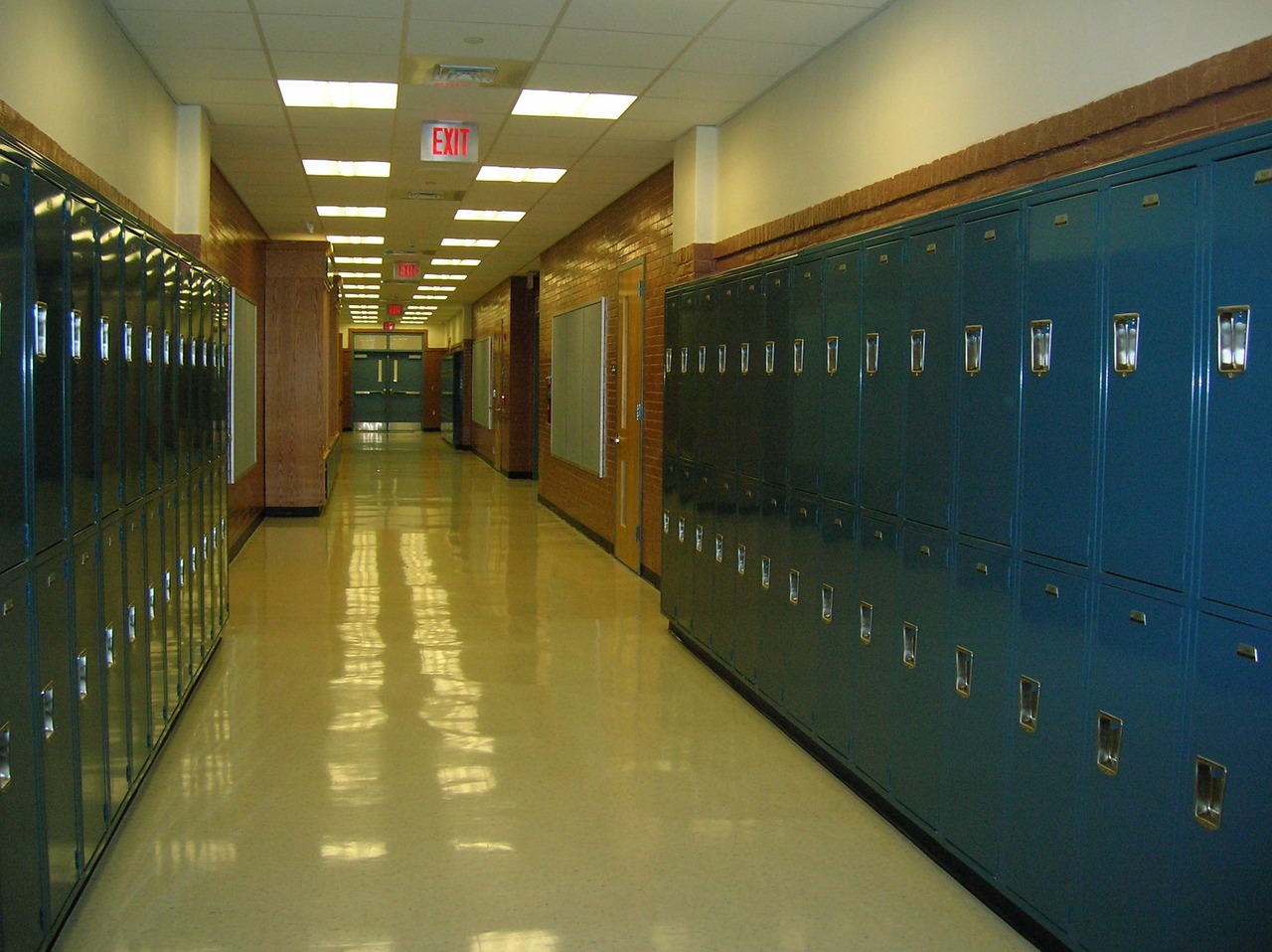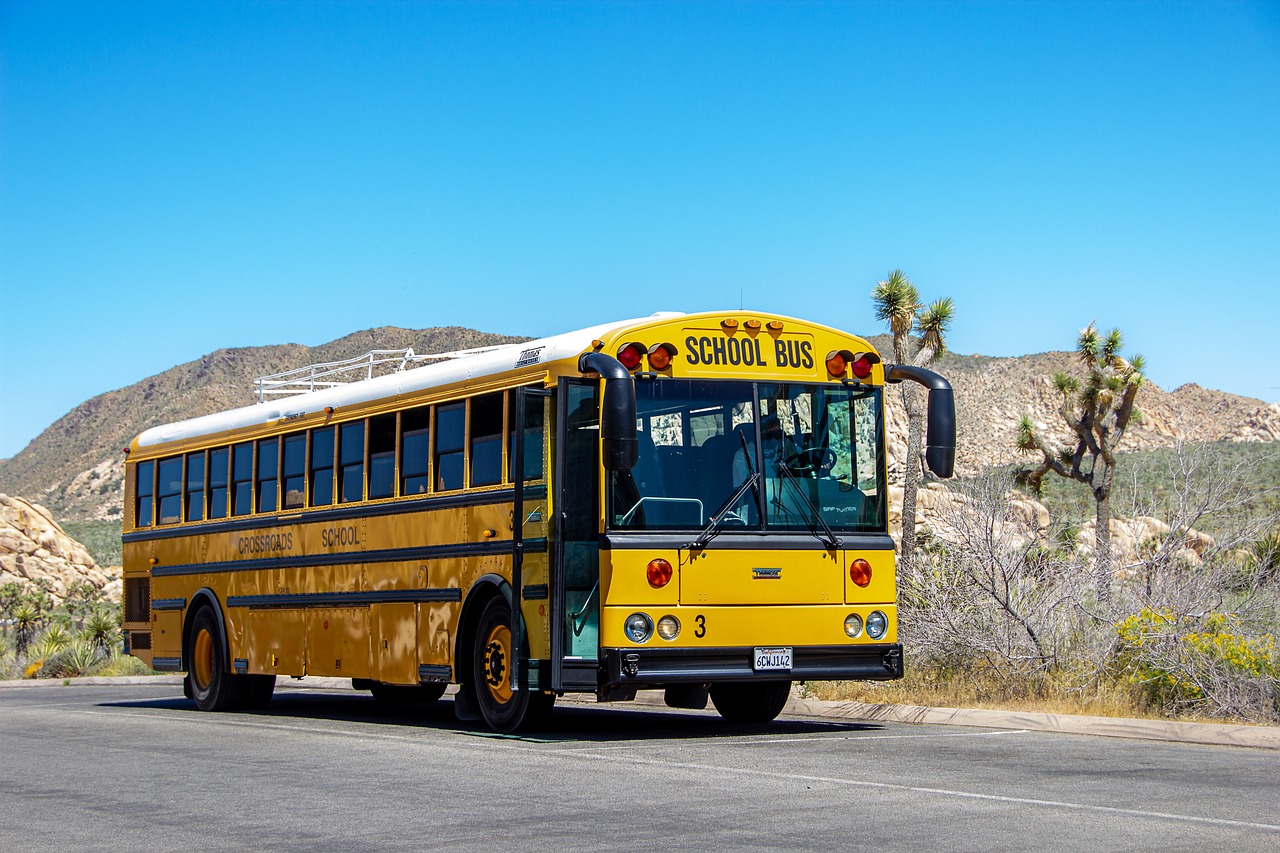Sustainability in Schools - What's the Role?
Sustainability in schools is not just a buzzword; it’s a vital movement that shapes the future of our planet and the minds of our students. As we face pressing environmental challenges, schools have a unique opportunity to lead by example, instilling a sense of responsibility and stewardship in the next generation. Imagine a world where students not only learn about environmental issues but actively participate in solutions. This is what sustainability in education aims to achieve.
At its core, sustainability in schools involves integrating ecological principles into the fabric of educational institutions. It's about creating a culture where students, teachers, and staff understand the importance of protecting our environment. This means more than just recycling paper or turning off lights; it’s about fostering an environmentally conscious mindset that extends beyond the classroom and into the community. When schools embrace sustainability, they not only reduce their ecological footprint but also inspire students to make informed decisions that positively impact the world.
So, what does this look like in practice? Schools can implement various initiatives that promote sustainability, such as developing green spaces, using renewable energy, and incorporating sustainability into the curriculum. For instance, imagine a school garden where students learn about biodiversity while growing their own vegetables. This hands-on experience not only teaches them about healthy eating but also connects them to the cycle of life and the importance of biodiversity. By embedding sustainability into the educational experience, schools can cultivate a generation of informed and engaged citizens who are passionate about making a difference.
Moreover, sustainability in schools has a ripple effect on the community. When schools adopt sustainable practices, they often engage families and local organizations, creating a network of support that amplifies their efforts. This collaboration can lead to community-wide initiatives, such as neighborhood clean-up days or local sustainability fairs, where families can learn together and take action. The impact is profound: not only do students learn valuable lessons about teamwork and responsibility, but they also see firsthand how individual actions contribute to a larger cause.
In conclusion, the role of sustainability in schools is multifaceted and essential. It empowers students to become proactive stewards of the environment, encourages collaboration with the community, and fosters a culture of responsibility. As we look to the future, it’s imperative that educational institutions embrace sustainability not just as an initiative but as a foundational principle that guides their mission. The question is, are we ready to take the leap and transform our schools into beacons of sustainability?
- What are the benefits of sustainability in schools?
Implementing sustainability practices in schools can lead to cost savings, improved student engagement, and enhanced community relationships. - How can students get involved in sustainability initiatives?
Students can participate in recycling programs, gardening projects, and energy conservation efforts, all of which promote hands-on learning. - What challenges do schools face in implementing sustainability?
Common challenges include budget constraints, lack of resources, and resistance to change among staff and administration. - How can parents support sustainability efforts in schools?
Parents can volunteer, advocate for sustainable practices, and participate in school events that promote environmental awareness.

Understanding Sustainability in Education
Sustainability in education is not just a buzzword; it’s a vital concept that shapes the future of our planet and the minds of our students. But what does it really mean? At its core, sustainability in education refers to the integration of ecological principles into teaching and learning processes. This approach encourages students to develop a strong environmental consciousness and a sense of responsibility towards the planet. Imagine a classroom where every lesson is infused with the idea of protecting our Earth—how powerful would that be?
The significance of sustainability in education cannot be overstated. As future leaders, students must understand the impact of their actions on the environment. Schools serve as a microcosm of society, making them the perfect setting to instill these values. By integrating sustainability into the curriculum, educational institutions not only equip students with knowledge but also inspire them to take action. It’s about creating a culture that values environmental stewardship and encourages critical thinking about ecological issues.
So, how can schools foster this environmentally conscious mindset among students? Here are a few ways:
- Curriculum Development: Schools can redesign their curricula to include sustainability topics across various subjects, from science to social studies.
- Hands-On Learning: Engaging students in projects that address real-world environmental challenges helps them connect theoretical knowledge with practical applications.
- Community Engagement: By collaborating with local organizations, schools can extend their sustainability efforts beyond the classroom, creating a ripple effect in the community.
Moreover, implementing sustainability initiatives in schools can lead to a more engaged and informed student body. When students participate in projects aimed at reducing waste or conserving energy, they become active participants in their education. They learn not just about the importance of sustainability but also about teamwork, problem-solving, and leadership. This hands-on experience is invaluable, as it prepares them to tackle the environmental challenges they will face in the future.
In summary, understanding sustainability in education is about more than just teaching students about the environment; it's about embedding these principles into the very fabric of educational institutions. By doing so, schools can cultivate a generation of environmentally responsible citizens who are equipped to make a positive impact on the world. The journey towards sustainability begins in the classroom, and it’s up to educators, students, and communities to make it a reality.

Implementing Green Practices
When it comes to building a sustainable future, schools are at the forefront of change. is not just a trend; it's a necessity. By adopting environmentally friendly initiatives, educational institutions can significantly reduce their ecological footprint while educating students about the importance of sustainability. But what does this look like in practice? Well, let’s dive into some practical steps that schools can take to enhance their sustainability efforts.
One of the first steps schools can take is focusing on waste reduction. This involves not only minimizing the waste generated on campus but also teaching students about the importance of reducing, reusing, and recycling. For instance, schools can implement comprehensive recycling programs that encourage students and staff to separate recyclables from general waste. Imagine a school where every classroom has clearly labeled bins for paper, plastics, and metals. It creates a culture of awareness and responsibility among students, fostering a sense of ownership over their environment.
Another effective strategy is to enhance energy efficiency. Schools can invest in energy-saving technologies such as LED lighting, energy-efficient appliances, and smart thermostats. By utilizing renewable energy sources like solar panels, schools can further reduce their reliance on fossil fuels. Picture a school powered by the sun, where students learn about renewable energy in a hands-on environment. It’s not just about saving money on utility bills; it’s about teaching future generations the importance of sustainable energy practices.
Furthermore, schools can consider adopting sustainable sourcing policies. This means purchasing supplies and materials that are made from recycled or sustainably sourced materials. By prioritizing products from local vendors, schools can also reduce their carbon footprint associated with transportation. Imagine the impact of a school that supports local businesses while teaching students about the benefits of sustainable consumption. It’s a win-win situation!
To give you a clearer picture of how these practices can be implemented, here’s a table summarizing some key green practices that schools can adopt:
| Green Practice | Description | Benefits |
|---|---|---|
| Waste Reduction | Minimizing waste through recycling and composting. | Less landfill waste, improved student awareness. |
| Energy Efficiency | Using energy-saving technologies and renewable energy. | Lower energy costs, reduced carbon footprint. |
| Sustainable Sourcing | Purchasing eco-friendly and locally sourced materials. | Support for local economy, reduced environmental impact. |
In addition to these practices, schools can also engage students through hands-on initiatives. For instance, organizing green clubs or sustainability committees can empower students to take charge of their school’s environmental impact. These clubs can lead projects like tree planting days, clean-up drives, or even creating a school garden that uses permaculture principles. When students actively participate in these initiatives, they not only learn valuable skills but also develop a deeper connection to their environment.
So, as you can see, implementing green practices in schools goes beyond just a checklist of tasks. It’s about creating a culture of sustainability that permeates every aspect of school life. By engaging students, staff, and the community, schools can become powerful agents of change, inspiring future generations to prioritize our planet. After all, if we want to see a sustainable future, we must start with the leaders of tomorrow—our students!
- What are some simple green practices schools can start with? Schools can begin with recycling programs, energy-efficient lighting, and waste reduction initiatives.
- How can students get involved in sustainability efforts? Students can join or form green clubs, participate in eco-friendly projects, and advocate for sustainable practices in their schools.
- Why is sustainability important in education? Sustainability in education promotes environmental awareness and responsibility, preparing students to tackle future challenges related to climate change.

Waste Management Strategies
Effective waste management is a cornerstone of sustainability in schools, and it’s vital for cultivating an environmentally responsible mindset among students and staff. Imagine a school where trash bins overflow with waste, while recyclable materials are tossed aside without a second thought. This scenario not only harms the planet but also misses an incredible opportunity to teach students about responsible waste disposal and environmental stewardship. By adopting robust waste management strategies, schools can significantly reduce their ecological footprint and inspire a culture of sustainability.
One of the most impactful approaches schools can take is to implement comprehensive recycling programs. These programs serve as a practical way for students to engage in sustainability practices. Think of recycling as a game; it’s about sorting materials correctly and competing to see which class can recycle the most. To establish a successful recycling initiative, schools should consider the following:
- Education: Teach students about what materials can be recycled and the importance of recycling.
- Logistics: Set up clearly labeled recycling bins throughout the school, making it easy for students to participate.
- Community Involvement: Engage parents and local organizations to support the recycling efforts, creating a community-wide initiative.
Another effective strategy is the introduction of composting initiatives. Food waste is a significant contributor to landfill overflow, and schools can play a critical role in mitigating this issue. By setting up composting programs, schools not only reduce waste but also educate students about the benefits of composting. Students can actively participate by collecting food scraps from their lunches and contributing them to a compost bin. This hands-on experience teaches them about the decomposition process and how organic waste can be transformed into nutrient-rich soil for gardens.
To ensure the success of these waste management strategies, schools should track their progress and celebrate their achievements. For example, they could create a waste reduction scoreboard displayed in the cafeteria or hallways, showcasing the amount of waste diverted from landfills through recycling and composting. This not only motivates students but also builds a sense of community as everyone works together toward a common goal.
In conclusion, implementing effective waste management strategies in schools is not just about reducing trash; it’s about instilling a sense of responsibility and awareness in students. By fostering an environment where recycling and composting are part of daily life, schools can create future leaders who are committed to sustainability. The journey towards a greener future starts in the classroom, and with the right strategies in place, schools can make a significant impact.
Q1: What materials can typically be recycled in schools?
A1: Common recyclable materials include paper, cardboard, certain plastics (check local guidelines), glass, and metal cans. It's essential to educate students on what can and cannot be recycled to avoid contamination.
Q2: How can students get involved in waste management initiatives?
A2: Students can participate by joining eco-clubs, helping with recycling and composting programs, and spreading awareness about sustainability practices among their peers.
Q3: What are the benefits of composting in schools?
A3: Composting reduces food waste, creates nutrient-rich soil for school gardens, and educates students about the natural decomposition process, fostering a deeper understanding of ecological cycles.
Q4: How can schools track their waste reduction progress?
A4: Schools can implement a waste tracking system, where they weigh waste and recyclables regularly, and display the results on a scoreboard or bulletin board to encourage participation and celebrate achievements.

Recycling Programs
Implementing in schools is not just a trend; it's a crucial step toward fostering a culture of sustainability among students and the community. Imagine a school where every student understands the importance of recycling, not just as a chore but as a vital part of their daily lives. This transformation starts with effective recycling initiatives that are well-planned and engaging.
To establish a successful recycling program, schools need to consider several key elements. First and foremost, education plays a pivotal role. Students must understand what can be recycled and why it's essential to do so. Schools can organize workshops or informational sessions that explain the recycling process and its environmental benefits. For instance, did you know that recycling one ton of paper can save over 17 trees? This kind of information can motivate students and staff alike to participate actively.
Next, logistics are essential for the smooth operation of a recycling program. Schools should set up clearly marked recycling bins throughout the campus, making it easy for students to dispose of recyclable materials. A simple color-coding system can be effective: for example, blue bins for paper, green for plastics, and yellow for metals. This visual cue helps everyone remember where to place their recyclables, reducing contamination and improving the overall efficiency of the program.
Moreover, community involvement is a game-changer. Schools can collaborate with local recycling facilities to provide resources and support. This partnership can lead to special events, such as recycling drives or competitions, where classes compete to see who can recycle the most materials over a month. Not only does this foster a sense of community, but it also instills a sense of pride among students when they see their collective efforts making a difference.
Another innovative approach is to integrate recycling into the school's curriculum. Teachers can create projects that involve students in hands-on recycling activities, such as designing posters to promote recycling or even creating art from recycled materials. This not only enhances learning but also makes recycling a fun and creative endeavor.
In summary, establishing a robust recycling program in schools requires a blend of education, clear logistics, community involvement, and curriculum integration. By taking these steps, schools can significantly reduce waste and instill a lifelong commitment to sustainability in their students. After all, the habits we cultivate today will shape the world of tomorrow.
- What materials can typically be recycled in schools? Most schools can recycle paper, cardboard, plastics (usually #1 and #2), metals, and sometimes glass. It's important to check local guidelines.
- How can students get involved in the recycling program? Students can participate by helping to educate their peers, organizing recycling events, and even leading initiatives to increase recycling awareness.
- What are some common challenges faced when implementing recycling programs? Common challenges include contamination of recyclables, lack of student engagement, and insufficient resources for proper recycling.

Composting Initiatives
Composting initiatives in schools are not just about reducing waste; they are a powerful way to engage students in environmental stewardship and hands-on learning. Imagine transforming the leftovers from lunch into nutrient-rich soil for a school garden! This not only minimizes food waste but also teaches students about the natural cycles of decomposition and the importance of soil health. By setting up a composting program, schools can turn a simple act into a multifaceted educational experience.
To start, schools need to establish a clear plan for their composting initiative. This involves selecting a suitable location for the compost bins, ideally close to the cafeteria to make it convenient for students and staff to dispose of organic waste. It's essential to educate everyone involved about what can and cannot be composted. For instance, fruits and vegetables, coffee grounds, and eggshells are excellent compost materials, while meats and dairy should be avoided to prevent odors and pests.
One effective strategy is to create a team of student "compost ambassadors." These students can lead the charge, promoting the composting program and educating their peers about its benefits. They can even organize fun, interactive workshops where students learn how to compost properly. This hands-on approach not only fosters a sense of responsibility but also cultivates leadership skills among participants.
Moreover, integrating composting into the science curriculum can enhance learning outcomes. Teachers can design lessons around the composting process, exploring topics like microorganisms, the carbon-nitrogen ratio, and the environmental impact of food waste. This way, students can see the real-life applications of their classroom learning, making education more relevant and engaging.
In addition to educational benefits, composting can create a sense of community within the school. Schools can partner with local gardening clubs or environmental organizations to share resources and knowledge. Furthermore, the compost produced can be used in school gardens, fostering a connection between students and the food they grow. This cycle of learning, action, and impact not only benefits the school environment but also instills lifelong values of sustainability in students.
In conclusion, composting initiatives in schools represent a dynamic approach to sustainability. They provide practical solutions to waste management while enriching the educational experience. By empowering students to take part in composting, schools can cultivate a generation of environmentally conscious individuals ready to make a difference in their communities.
- What materials can be composted in school programs? Most organic materials such as fruit and vegetable scraps, coffee grounds, and yard waste can be composted. Avoid meats, dairy, and oily foods.
- How can we get students involved in composting? Engage students by forming a compost club, providing training, and making them "compost ambassadors" to promote the initiative.
- What are the educational benefits of composting? Composting can be integrated into science lessons, helping students learn about ecosystems, decomposition, and sustainability practices.
- How can compost be used in school gardens? The compost produced can enrich the soil in school gardens, promoting better plant growth and providing students with hands-on gardening experience.

Energy Efficiency Measures
When we talk about sustainability in schools, one of the most impactful areas to focus on is energy efficiency. Why? Because energy consumption in educational institutions is a significant contributor to their overall carbon footprint. By adopting energy-efficient practices, schools not only reduce their environmental impact but also save money that can be redirected towards educational resources and programs. Imagine your school using less energy and, at the same time, contributing to a healthier planet. It’s a win-win!
There are several effective measures that schools can implement to enhance their energy efficiency. For starters, schools can consider investing in renewable energy sources. Solar panels, for example, can significantly reduce reliance on fossil fuels. Not only do they provide a clean energy source, but they also create a hands-on learning opportunity for students, allowing them to see the benefits of renewable energy in action. Additionally, schools can explore partnerships with local energy providers to access green energy options.
Another crucial aspect of energy efficiency is upgrading existing infrastructure. Many schools have outdated heating, ventilation, and air conditioning (HVAC) systems that consume far more energy than necessary. By replacing these systems with modern, energy-efficient models, schools can drastically cut down on energy usage. For instance, switching to LED lighting can reduce electricity consumption by up to 75%. Imagine walking into a brightly lit classroom that not only feels welcoming but also uses a fraction of the energy!
Moreover, schools can implement energy-saving technologies that monitor and manage energy use more effectively. Smart thermostats, for example, can adjust heating and cooling based on occupancy, ensuring that energy isn’t wasted when classrooms are empty. These technologies can be integrated into a school's overall energy management system, providing real-time data that helps staff make informed decisions about energy use.
To illustrate the potential savings from implementing energy efficiency measures, consider the following table:
| Energy Efficiency Measure | Potential Savings (%) | Additional Benefits |
|---|---|---|
| Upgrading to LED Lighting | Up to 75% | Longer lifespan, reduced maintenance costs |
| Installing Solar Panels | 50-90% (depending on usage) | Hands-on learning, energy independence |
| Implementing Smart Thermostats | 10-30% | Increased comfort, reduced energy waste |
These measures not only contribute to a more sustainable school environment but also instill a sense of responsibility among students. When students see their school taking significant steps towards energy efficiency, they are more likely to adopt similar practices in their own lives. This creates a ripple effect, fostering a generation that values sustainability.
In conclusion, energy efficiency measures are a crucial component of building sustainable schools. By investing in renewable energy, upgrading infrastructure, and utilizing energy-saving technologies, schools can significantly reduce their carbon footprint while providing a better learning environment for students. So, the next time you step into your school, take a moment to think about the energy it uses and the steps that can be taken to make it even more efficient.
- What are the benefits of energy efficiency in schools?
Energy efficiency reduces operational costs, minimizes environmental impact, and creates a healthier learning environment. - How can students get involved in energy efficiency initiatives?
Students can participate in energy audits, promote awareness campaigns, and engage in projects that focus on renewable energy solutions. - Are there financial incentives for schools to implement energy efficiency measures?
Yes, many governments and organizations offer grants, rebates, and tax incentives for schools that invest in energy-efficient technologies.

Curriculum Integration
Integrating sustainability into the curriculum is not just a trend; it's a necessity for nurturing a generation that values and understands the importance of our planet. Imagine students not only learning about math and science but also how these subjects relate to the environment around them. By weaving sustainability into various subjects, educators can create a rich tapestry of knowledge that empowers students to think critically about ecological issues. This approach encourages them to become active participants in the quest for solutions to pressing environmental challenges.
One innovative way to achieve this integration is through project-based learning. This method allows students to dive deep into real-world sustainability issues, fostering a hands-on understanding of the challenges we face. For example, students might work on a project to design a community garden, which would not only teach them about ecosystems but also about teamwork, responsibility, and the joy of nurturing life. Such projects can illuminate the interconnectedness of various disciplines, showing how math can help in calculating the area for planting and science can explain photosynthesis.
Moreover, integrating sustainability into the curriculum can take many forms. Here are a few examples of subjects that can seamlessly incorporate sustainability:
- Science: Explore topics like renewable energy sources, ecosystems, and biodiversity.
- Mathematics: Analyze data related to waste management or energy consumption.
- Social Studies: Discuss the impact of climate change on different communities around the world.
- Art: Create projects that use recycled materials or highlight environmental themes.
To further enhance the learning experience, schools can collaborate with local environmental organizations. By inviting guest speakers or organizing field trips, students can gain firsthand knowledge and inspiration from those actively working in the field of sustainability. This not only enriches their education but also strengthens community ties, showing students that they are part of a larger movement toward a sustainable future.
As educators, it's crucial to foster an environment where sustainability is not just an add-on but a core principle. By integrating these concepts into the curriculum, schools can cultivate a culture of environmental stewardship that extends beyond the classroom. Students will leave school not only with academic knowledge but also with a deep-seated understanding of their role in protecting our planet. This holistic approach to education will not only prepare them for the challenges ahead but also inspire them to innovate and lead in creating sustainable solutions.
Q: How can teachers start integrating sustainability into their lessons?
A: Teachers can begin by identifying key sustainability topics relevant to their subject area and incorporating them into existing lesson plans. Collaborating with colleagues across disciplines can also help create a more comprehensive approach.
Q: What are some simple sustainability projects students can undertake?
A: Simple projects include starting a recycling program, creating a school garden, or conducting a waste audit to identify areas for improvement in waste management.
Q: How does project-based learning benefit students in understanding sustainability?
A: Project-based learning encourages critical thinking, problem-solving, and collaboration, allowing students to engage deeply with sustainability issues and develop practical solutions.

Project-Based Learning
Project-Based Learning (PBL) is a dynamic classroom approach in which students actively explore real-world problems and challenges, fostering a deeper understanding of sustainable practices. Imagine students stepping outside the confines of traditional learning, engaging in projects that resonate with their lives and communities. This method not only enhances their critical thinking skills but also instills a sense of responsibility towards the environment. For instance, a project could involve students investigating local water quality, analyzing the effects of pollution, and proposing solutions to improve it. This hands-on experience makes learning tangible and relevant.
Incorporating sustainability into PBL can take many forms. Schools can initiate projects that focus on:
- Energy Conservation: Students can conduct energy audits of their school, identifying areas where energy can be saved.
- Community Gardens: Establishing a garden not only teaches students about agriculture but also about food systems and biodiversity.
- Waste Reduction Campaigns: Students can create campaigns to reduce single-use plastics within their school, promoting recycling and responsible consumption.
These projects allow students to collaborate, think critically, and engage with their peers and teachers in meaningful ways. Moreover, they often result in tangible outcomes that benefit the community, such as improved local environments or increased awareness of sustainability issues. By working on these projects, students become advocates for change, learning to navigate challenges and develop solutions that have real-world applications.
Furthermore, PBL encourages students to reflect on their learning processes and outcomes. They can present their findings to the school or the community, thereby enhancing their communication skills and boosting their confidence. This reflection is crucial as it helps students understand the impact of their actions and the importance of sustainability in their daily lives.
In essence, Project-Based Learning not only enriches the educational experience but also cultivates a generation of environmentally conscious individuals. By embedding sustainability into the fabric of PBL, schools can inspire students to become proactive stewards of the planet, ready to tackle the environmental challenges of tomorrow.
Q1: What is Project-Based Learning?
A1: Project-Based Learning is an educational approach where students learn by engaging in projects that address real-world problems, allowing them to apply their knowledge and skills in practical situations.
Q2: How does PBL enhance sustainability education?
A2: PBL enhances sustainability education by allowing students to explore environmental issues hands-on, fostering critical thinking and problem-solving skills while promoting community involvement and awareness.
Q3: Can PBL be integrated into all subjects?
A3: Yes! PBL can be integrated across various subjects, including science, social studies, and even the arts, making it a versatile approach to teaching sustainability.
Q4: How can schools measure the success of PBL initiatives?
A4: Schools can measure success through student feedback, project outcomes, community impact, and the extent to which students demonstrate understanding of sustainability concepts.

Community Involvement
When it comes to sustainability in schools, plays a pivotal role that cannot be overlooked. Think of a school as a small ecosystem, where students, teachers, parents, and local organizations all contribute to its growth and sustainability. By engaging the community, schools can amplify their sustainability efforts and create a ripple effect that extends beyond the classroom.
One of the most effective ways schools can foster community involvement is through collaborative projects. These projects not only bring together various stakeholders but also provide a platform for students to apply their learning in real-world contexts. For instance, a local garden project can be a fantastic opportunity for students to learn about sustainable agriculture while working alongside community members. Imagine students planting vegetables, learning about composting, and understanding the importance of local food systems—all while building relationships with their neighbors!
Moreover, schools can host workshops and events that invite community members to participate in sustainability initiatives. These could range from clean-up drives in nearby parks to educational seminars on energy conservation. By creating an environment where community members feel valued and included, schools can foster a sense of ownership and responsibility towards sustainability efforts. For example, a school might organize a “Green Day,” where families come together to learn about recycling, energy-saving tips, and even participate in planting trees. The enthusiasm generated from such events can be contagious, inspiring families to implement sustainable practices at home.
Additionally, schools can partner with local organizations and businesses to enhance their sustainability initiatives. This collaboration can manifest in various ways, such as:
- Sponsorships: Local businesses can sponsor recycling bins or garden supplies, providing essential resources for schools.
- Expert Workshops: Community experts can conduct workshops on sustainability topics, enriching the students' learning experience.
- Internship Opportunities: Schools can create internship programs with local businesses focused on sustainability, allowing students to gain practical experience.
By fostering these partnerships, schools not only enhance their sustainability efforts but also prepare students for future careers in green industries. It's a win-win situation! Students gain valuable skills, and the community benefits from the innovative ideas and energy that young minds bring to the table.
Finally, measuring the impact of community involvement is crucial. Schools can utilize surveys and feedback mechanisms to assess how these initiatives influence sustainability practices within the community. Over time, this data can help schools refine their strategies, ensuring that they remain effective and engaging.
Q: Why is community involvement important for school sustainability initiatives?
A: Community involvement enhances the impact of sustainability initiatives by fostering collaboration, sharing resources, and creating a sense of ownership among community members.
Q: How can schools effectively engage the community?
A: Schools can engage the community through collaborative projects, workshops, events, and partnerships with local organizations and businesses.
Q: What are some examples of successful community involvement in sustainability?
A: Examples include community gardens, clean-up drives, educational seminars, and collaborative recycling programs that involve both students and community members.
Q: How can schools measure the success of their community involvement efforts?
A: Schools can use surveys, feedback forms, and participation metrics to assess the effectiveness of their community involvement initiatives in promoting sustainability.
Frequently Asked Questions
- What is sustainability in education?
Sustainability in education refers to the integration of ecological principles into the teaching and learning process. It aims to foster an environmentally conscious mindset among students, encouraging them to think critically about their impact on the planet.
- How can schools implement green practices?
Schools can adopt various green practices such as waste reduction, energy efficiency, and sustainable sourcing. Practical steps include starting recycling programs, using energy-saving technologies, and sourcing materials from sustainable suppliers to minimize their environmental impact.
- What are effective waste management strategies for schools?
Effective waste management strategies include establishing recycling programs and composting initiatives. These programs not only reduce waste but also engage students and staff, teaching them the importance of responsible waste disposal and environmental stewardship.
- How can schools set up successful recycling programs?
To set up successful recycling programs, schools should focus on logistics such as clearly labeled bins, regular collection schedules, and community involvement. Educating students and staff about what can be recycled and why it's important is also crucial for the program's success.
- What benefits do composting initiatives provide?
Composting initiatives significantly reduce food waste in schools and provide educational opportunities for students. By being involved in the composting process, students learn about waste reduction, soil health, and the importance of sustainability in their daily lives.
- What measures can schools take to improve energy efficiency?
Schools can improve energy efficiency by using renewable energy sources like solar panels, implementing energy-saving technologies, and promoting energy conservation practices among students and staff. These measures not only lower carbon footprints but also reduce operational costs.
- How can sustainability be integrated into the curriculum?
Integrating sustainability into the curriculum can be achieved through innovative teaching methods like project-based learning. This approach allows students to tackle real-world sustainability issues, encouraging critical thinking and problem-solving skills related to environmental challenges.
- What role does community involvement play in school sustainability efforts?
Community involvement enhances the impact of school sustainability initiatives by fostering collaboration with local organizations and families. Engaging the community helps to extend sustainable practices beyond school grounds and creates a collective effort towards a greener future.



















